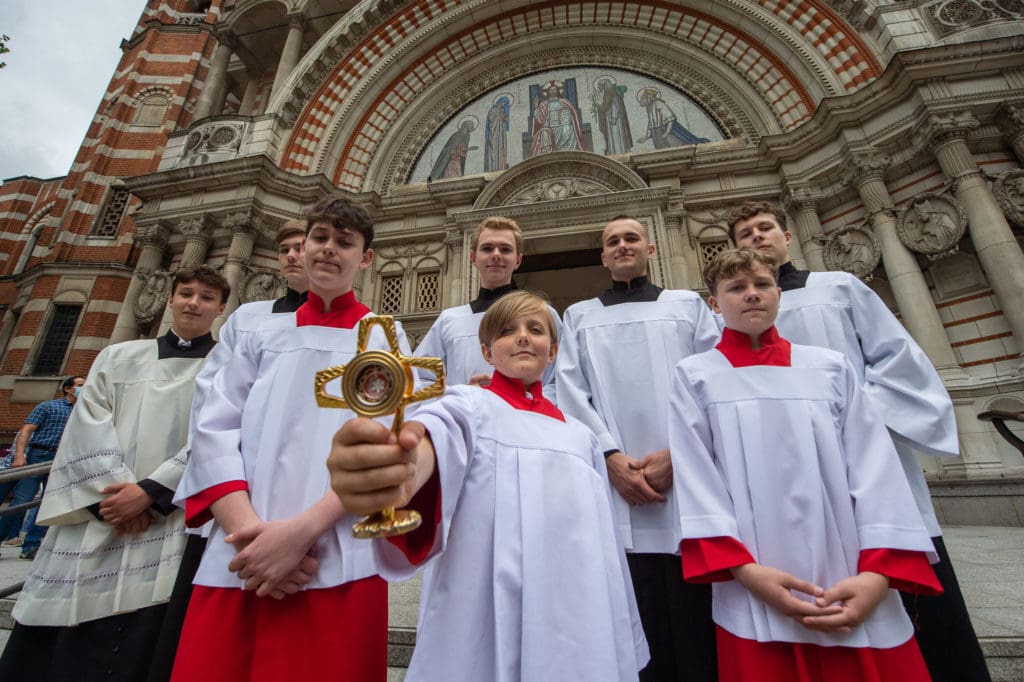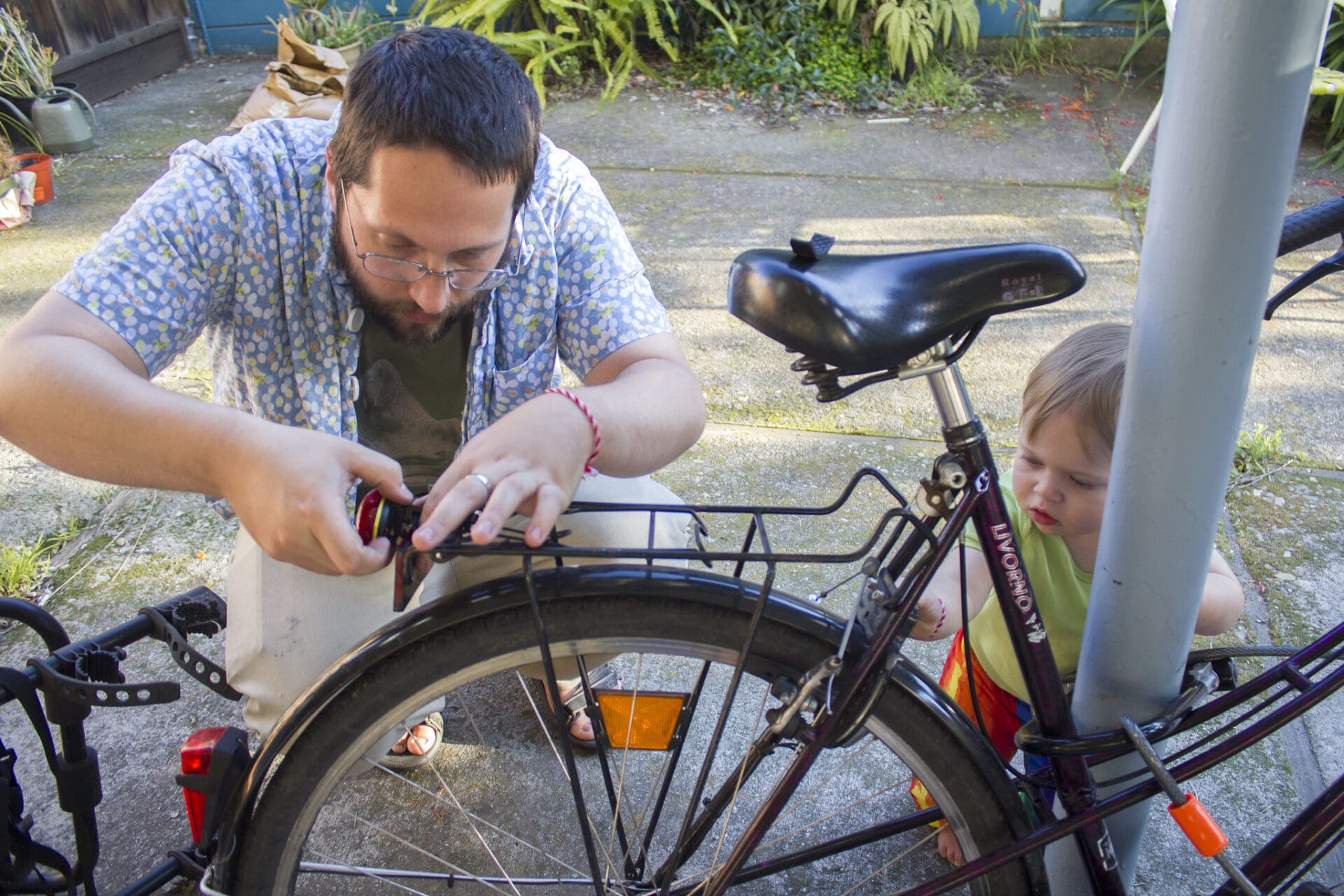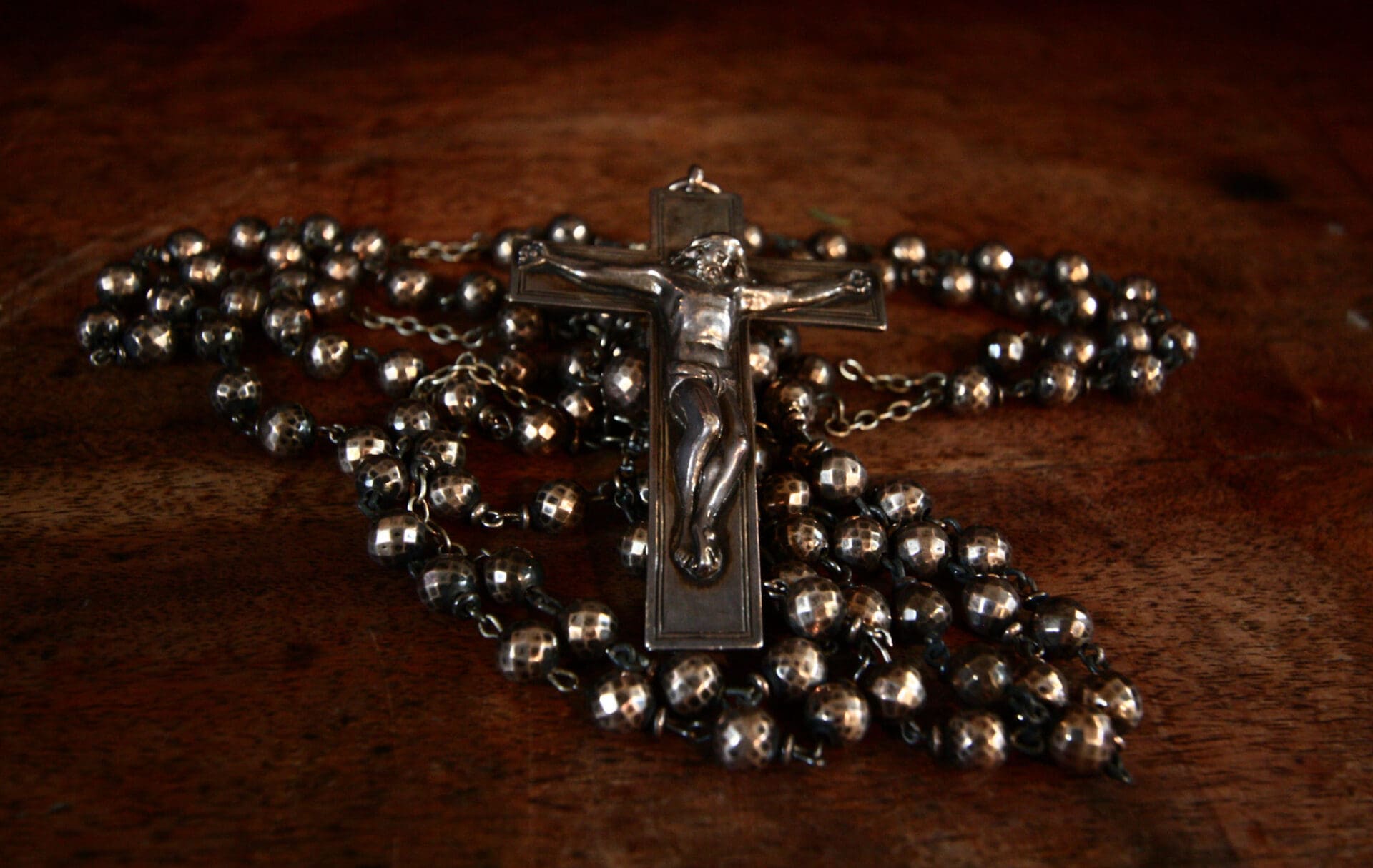When I was a child, my father would involve me in all sorts of construction projects around the house. We built a custom skateboard, chopped down a massive tree in the backyard by hand, and carved wooden toy cars to race in my scouting troop. He had a full workshop in our garage where he taught me how to saw a board in half, hammer a nail, and clamp boards together with glue to form a strong joint. We sanded and stained and painted. I remember once, when I was a teenager, he even helped me replace the motor that worked the driver-side window of my beat-up old Camry. Because of the experience I had growing up with a father who patiently included me in his handyman routine around the house, I’m now fairly capable when it comes to projects in my own house. I know how to frame out a wall with two-by-fours, how to hang drywall, and wire electrical outlets.
I absorbed all this information from my father. He patiently taught me his craftsmanship, allowing me to make mistakes and demonstrating techniques to do better next time. Today, I’m unafraid to tackle projects because he gave me both skills and confidence. The way I go about these projects, the way I think through my task, make my plan, and carry it out, it’s just like my dad.
Portraits of Fatherhood
I have a parishioner, Mark, who was recently telling me how he lets his two young sons “help” him with house projects. He shows them how to use a screwdriver to take the plates off the electrical outlets, teaches them how to hammer, what to nail. The two boys are fascinated by the work and proud to be included. They get to do grown-up work. They’re the kind of tasks that attract young men because they include an element of danger, and one must be very responsible to be trusted with sharp saws and nails. For a father, it adds quite a bit of time to the project to include the boys. Mark could accomplish the task far more easily on his own. But these tutorials are the way of fathers and sons. It’s how children learn to grow up and be like dad.
Another friend of mine, Craig, owns an equipment rental shop where, after school, he would let his five-year-old son hang out for a few hours and help him fix the lawnmowers. The boy quietly watched how his dad took apart a carburetor, cleaned it, and put it all back together. Craig would patiently explain to his son what he was doing and why. Then he put the tools in his hands and let him practice while he coached him. It would take extra time—quite a bit, I imagine. After all, his son was learning and still made mistakes. Those mistakes didn’t last long. The boy could fix a lawnmower all by himself by the time he was six years old.
Just like boys who are proud to be granted the responsibility to work with their fathers, the altar boy understood the importance of his service at the altar and was pleased to be able to contribute.
After Mass, I always stand outside on the church porch and visit with the parishioners. One man, a regular visitor from out of town who travels into our parish several times a year for work and stays for a week at a time, paused to thank me for letting his son serve at the altar all week during Masses. When I first met his son, he was a boy of about ten years old who knew nothing about altar serving. In the sanctuary on his first day, he was like a baby deer tripping over his own legs, nervous and somewhat panicked as he dashed around trying to remember what I’d taught him. But he was eager to practice. He showed up, day after day. He watched and imitated. He began to hold his hands in a prayerful posture just as I do, and nod his head in reverence at the name of Jesus because he noticed how I do, and there were myriad other tiny details that he soaked up with an all-encompassing ability to observe and imitate. Nothing escaped him and he took his task seriously. Just like boys who are proud to be granted the responsibility to work with dangerous tools, he understood the importance of his service at the altar and was pleased to be able to contribute. By the end of a single week of altar serving he had become an old hand.
His father told me that the reason it was all new to him is because his pastor in their parish back home won’t use altar servers. He finds it more efficient to say Mass without them. The servers tend to make everything more complicated, so he doesn’t train them or schedule them.

My reaction is that, yes, absolutely, altar boys can be a handful. It isn’t unusual that one of the younger ones puts on a cassock that’s way too long and we don’t notice until Mass is about to start. Then we scramble to track down a smaller one. Some days, the boys have excess energy and the deacon and I have trouble keeping them quiet in the sacristy. We always have to watch them during the longer liturgies and litanies in case the boys kneeling with torches look faint. Often it feels like herding cats when we’re trying to put together the Gospel procession or get them all in place to receive communion. It requires significant time and effort to train them and, even so, they do still occasionally make mistakes during Mass or forget what they need to be doing.
All that said, I would never contemplate the idea of discontinuing the server program because of the extra layer of complexity added by having the boys in the sanctuary. It would be like a father refusing to include his sons in the work that fathers are meant to do—with sons.
Teach and They Will Learn
To be clear, having the servers around isn’t merely a question of efficiency during the Mass. As Pope St. John Paul II teaches in a general audience from August 1, 2001, altar servers are far more than priest-helpers. “Above all,” he says, “you are servants of Jesus Christ, the eternal High Priest.” In other words, the role of an altar server isn’t limited to the functional, and it really isn’t about a filling a practical “role” at all. This is why a priest shouldn’t only agree to keep them around when it’s convenient. Through fatherly indulgence, patience, and inclusion in the work of the altar, he is assisting them to become servants of Christ. This process is about far more than getting through the Mass as easily as possible. As the servers imitate the priest, they directly intuit a fatherly virtue, the practice of true religion, which is right worship at the altar of God. And, of course, both priest and server are imitating Christ himself who is our great high priest.
This aspect of imitation is vital to understanding the spiritual fatherhood of a priest for his servers. As a spiritual father, a priest keeps his sons close, shows them how to behave, what to do, how to pray. In that same general audience in 2001, Pope St. John Paul II says, “The vestments worn by altar servers are very special,” because they are a way of symbolically putting on the identity of Christ. The servers are not only called to inwardly imitate Our Lord, but there’s also an imitative quality to the exterior symbols such as their cassock and surplice. Again, the imitative quality originates in the imitation of Christ himself.
Anyone who has raised boys knows they are tremendous learners through imitation. As Socrates believed, imitation is one of the forms of education, a belief that is anecdotally and psychologically proven out by the habit of young children to learn by modeling the behavior of their parents. This is a fancy way of saying that our children will imitate us in what we do far more than they pay attention to what we say.
I want nothing more than to model for my sons the way a man prays, in the hope that one day they will be fathers themselves showing their own sons how to imitate them in the love and worship of God.
Assuming we have good models from which to imitate the good and the praiseworthy, we form virtuous habits as we move from youth into adulthood. It’s a great gift for the older generation to actively model devotion for the younger generation. In fact, this is precisely how Our Lord teaches his disciples. He keeps them close. He lets them observe his miracles and later sends them out to imitate them. He lets them observe his relationship with the Heavenly Father and then invites them into his prayer life. They learn how to be witnesses of the Gospel by spending time with their master. It’s no accident that the apostles, by and large, became martyrs. They gave up their lives for the gospel just as Christ taught them and demonstrated.
Perhaps the most intriguing insight to be gleaned from the fatherly care of Our Lord for his disciples is the invitation to gather round in Gethsemane and keep vigil with him. He kept his spiritual sons near and showed them how to maintain prayerfulness at the outset of the Passion. The Holy Sacrifice of the Mass places us in that exact same posture as we are prayerfully placed into the Passion of Christ through the liturgy. The task of the priest is to pray at the foot of the Cross, and he gathers his servers round to watch and wait with him as Christ is immolated upon the altar. Through imitation, the servers are learning how to keep vigil with Christ. And, just as the disciples learned, they’re gaining insight into the cost of love and why a man might be willing to make great sacrifices on behalf of that love.
They’re also learning independence. As they imitate, they become more comfortable being personally identified with the action. They internalize what they imitate and, soon enough, begin to feel their own independent motivation for devotion. They learn how to serve the Lord on their own. Once trained, they ring the sanctus bells, hold candles, care for the fire in the thurible, and so on. This isn’t busy work but, rather, a way through which they begin to assert their relation to God, to gain agency in their spiritual life. They’re at an age when they’re either making the faith their own or in the beginning stages of rejecting it and allowing it to die of neglect. With a good strong role model who invites them into the work at the altar, it’s more likely they’ll choose to make the faith their own. After all, everything we know about passing on the faith emphasizes the importance of the role of fathers.
Raise Them Up with You
“No disciple is superior to the teacher;” says Our Lord, “but when fully trained, every disciple will be like his teacher” (Luke 6:40). This is why it simply won’t do to sideline the boys. Doing so would be like a dad telling his sons to go inside and watch television because he can’t be bothered to let them help out. He can get the job done faster on his own. This is the refusal to allow the boys to become disciples, a refusal to hand on the faith.
In the end, what father doesn’t want his sons to be like him? Indeed, to be an improved version of him? This means that we should be greatly desirous that the boys learn to become fathers themselves through their service at the altar, either that they grow into the fatherhood of priesthood or become fathers to families of their own. Sons want to be just like dad. We can’t deny them that chance.
I happen to be a married priest ordained under the pastoral provision set up by Pope St. John Paul II for former Anglican clergy. Because of this, I have two sons who often serve at the altar with me. I want nothing more than to model for them the way a man prays, in the hope that one day they will be fathers themselves showing their own sons how to imitate them in the love and worship of God. In the meantime, I’m humbled to have the privilege of keeping them near me at the altar where we pray together as a family along with the other altar servers, sons each and every one of us of our Heavenly Father.
Father Michael Rennier lives in St. Louis with his wife and children. A convert from Anglicanism with his family, he has an MDiv from Yale Divinity School and is a Catholic priest in the Archdiocese of St. Louis. He is associate editor at Dappled Things: A Quarterly of Ideas, Art & Faith, and a regular contributor at Aleteia.


